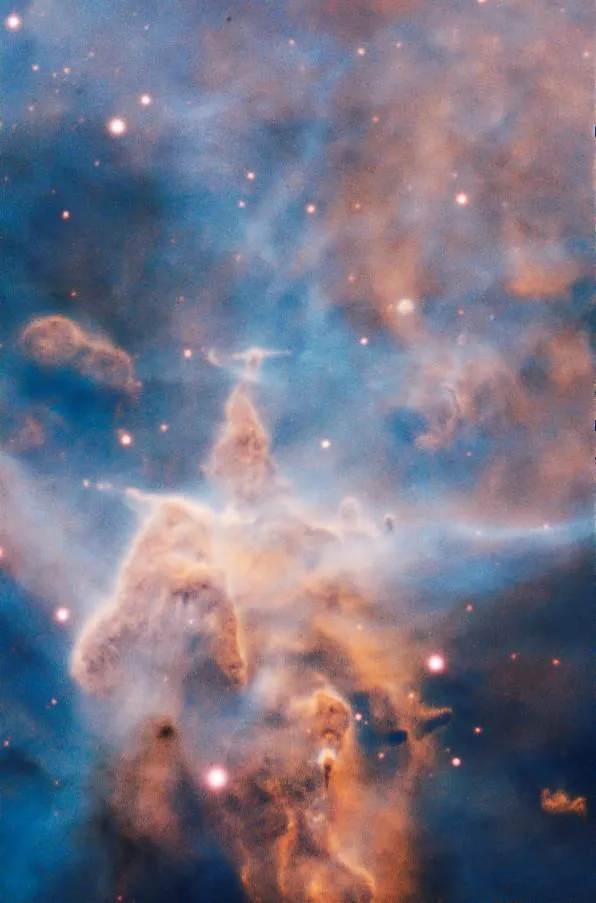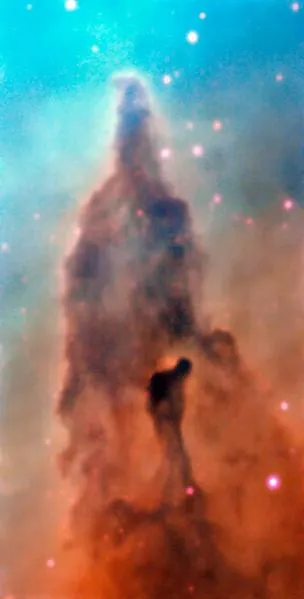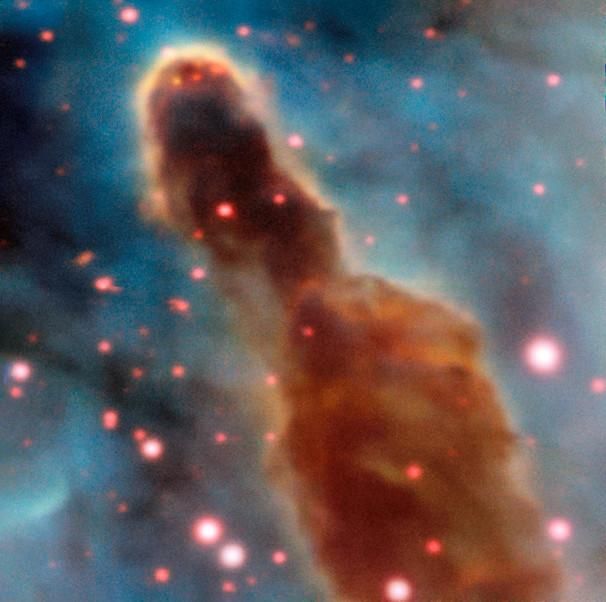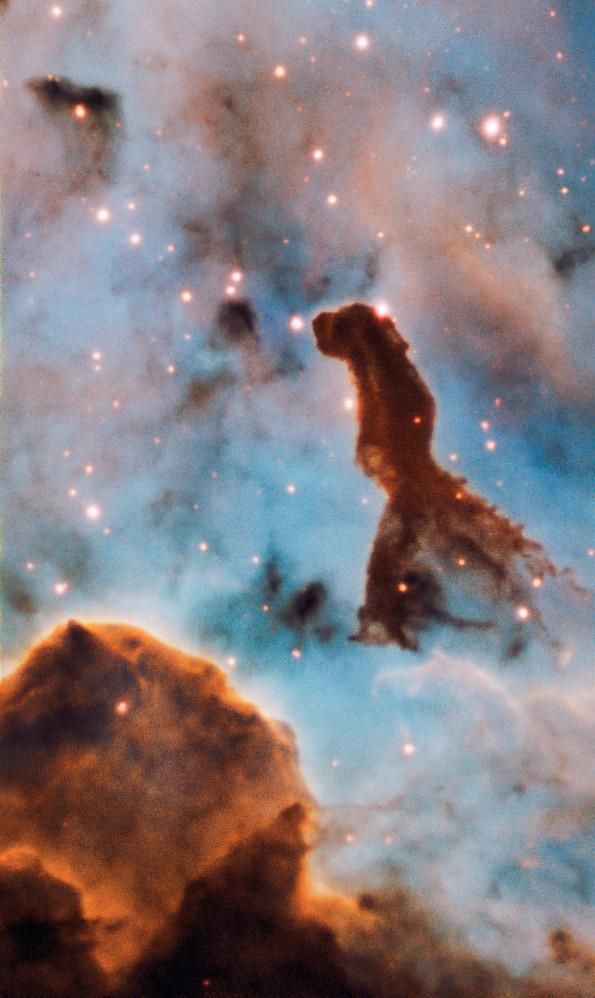Stunning Images Capture the Carina Nebula’s “Pillars of Destruction”
Caught by ESO’s Very Large Telescope, the ten pillars of gas and dust are a hazy star nursery 7,500 light years away
In 1995, the Hubble Space telescope captured what may be its most iconic image, the Pillars of Creation. The stunning photo shows three finger-like appendages reaching upward with a smaller one, reminiscent of a thumb, below. The pillars, which are located in the Eagle Nebula about 7,000 light years from the sun are composed of molecular hydrogen and dust. They serve as star incubators, with young, hot stars forming inside of the pillars as the clouds of gas and dust collapse in on themselves.
Now, the European Southern Observatory in Chile has released images of newly discovered structures they call the “Pillars of Cosmic Destruction” captured using ESO's Very Large Telescope—a collection of four telescopes all working together. Researchers spotted the pillars, also known as elephant trunks, inside the Carina Nebula, which lies about 7,500 light years from Earth. The nebula is among the largest "star nurseries" in the Milky Way, and each pillar is about three light years long, writes Ben Guarino at The Washington Post.
The researchers studied the haze using the Multi Unit Spectroscopic Explorer (MUSE), attached to the telescope, which took thousands of images of the pillars at different wavelengths of light. From this data they created 3D images to understand the properties of the structures.
The result is a beautiful depiction of the formation of a star, which involves both cosmic death and cosmic life. Guarino explains:
New stars are born from collapsing clouds of interstellar material. From within, the young heavenly bodies begin to eat away at the mother cloud, bathing gas molecules in radiation so strong it can slice electrons free from the atoms. Nearby, too, already-formed stars blast the clouds with powerful emissions.
The measured radiation from these news stars is so strong that it causes the clouds to disperse, notes Guarino, which is known as photoevaporation. So once the stars form, the radiation they emit blast away the pillar that spawned them.
It’s also possible that the radiation and stellar wind from the massive stars may blow the gas and dust into denser concentrations, creating more stars within the pillar. The researchers published their findings in the Monthly Notices of the Royal Astronomical Society.








